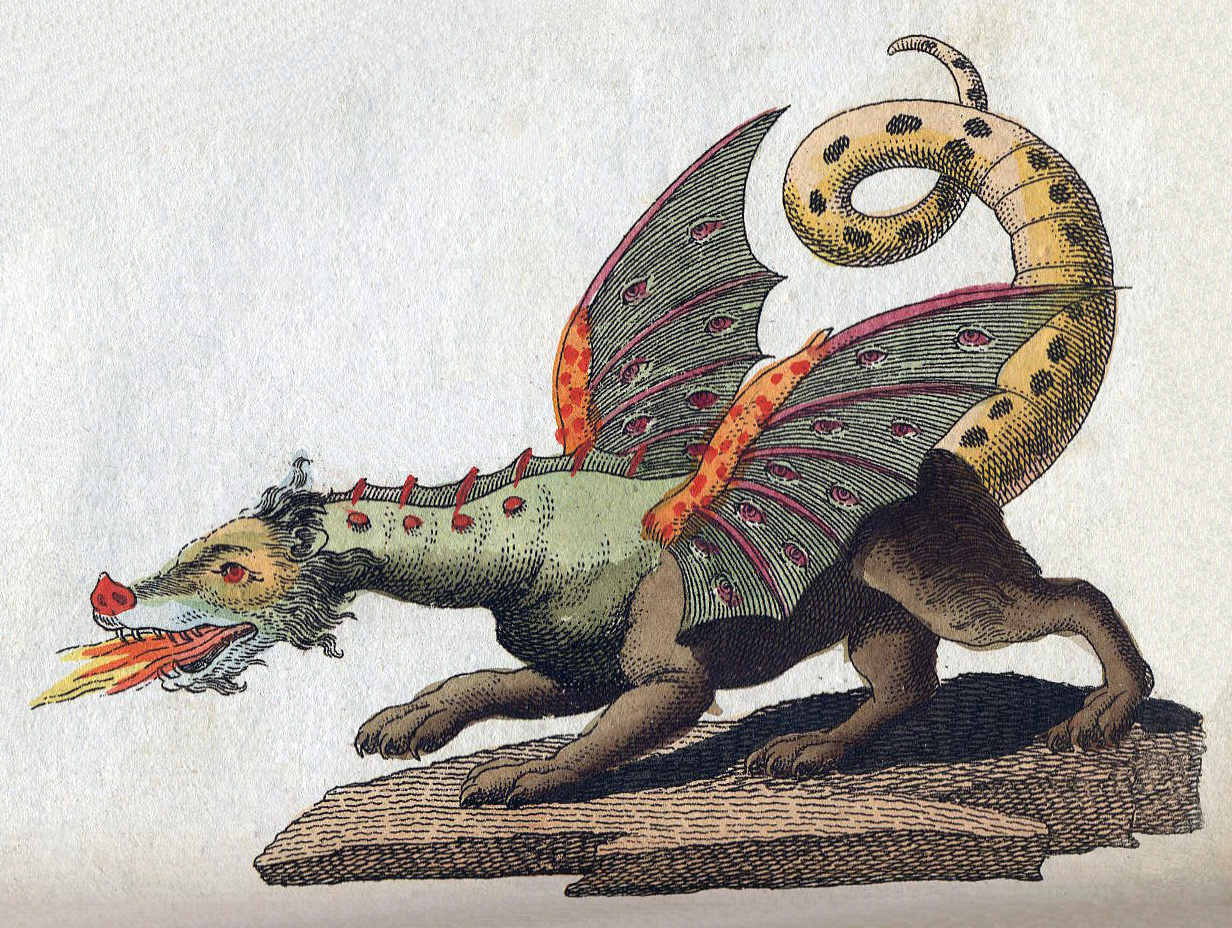This week we look at the neverborn’s control mechanism to keep mortals from getting too powerful, the Dragonstorm. The idea for the need for dragonstorms came from thinking about how to avoid the problem of having a setting that both had significant history, but was also still in the dark ages. Thus the need for some kind of societal reset. In Gal Hadre, dragons are the biggest, baddest threats out there, so they seemed like an obvious choice (now might be a good time to read the Gal Hadre dragon article if you haven’t yet. found here ) Now we will look at an in setting document written by Kandalan of Seidat, a Tund historian with access to the most ancient of documents found in their archives, and some Werd records as well.

Dragonstorms are a phenomena that is routinely referenced in ancient texts, annoyingly (a consistent problem in many areas of ancient lore) the authors seem to assume that word means far more to a reader than it does in modern times. The records do indicate that the Tund appear to have witnessed three Dragonstorms since the War of the Neverborn; though Formest’s summaries claim that the second Dragonstorm was actually four separate events that took place across approximately a century. Knowing what I know about the quality of his other scholarly work, it can be discounted almost entirely as an accurate representation of history.
There is a noticeable drop off in number of documents between each Dragonstorm, suggesting that the Dragonstorms even reached Ithhon and were quite violent. The earliest one is primarily mentioned in the mythical saga of Lord Herko, a figure who might not have even existed. The Dragonstorm takes place at the end of the saga, when Lork Herko is in his twilight years. It claims that the number of dragons, then only firstborn, secondborn and thirdborn, were enough to place entire lands in shadow; surely if the neverborn had been able to muster that many elder dragons they would have won the War of the Neverborn outright. Even in this mythical tale many powerful lords, warriors and mages are slain and great fortresses are overthrown; of course the hero and others slay many dragons before Herko is slain and found atop a mound of dead dragons. It is clearly fiction, but all myths have a basis in real events. Ithhon must have been invaded at least once by a significant force of the neverborn’s armies, led by a large number of dragons.
The shard city archives get slightly more detailed about the second Dragonstorm, but it seems much of the same as the claims of the first dragonstorm. Many of the records themselves are incomplete or damaged. They indicate a scale of attack that prevented different elements of their holdings across Ithhon from supporting each other, as allegedly several key centers were attacked nearly simultaneously. The records from around this time are also the last period that several locations that have significant importance to the early generations of Tund are mentioned; they appear in no later records and did not survive the ruin of Ithhon as shard cities. Whatever fate befell them their ruins are lost to all mortal methods of reaching them.

The records of the last dragonstorm are relatively close to the shattering of Ithhon and thus are actually less complete than those of the previous dragonstorm. The records aren’t even clear which happened first, as a portion of the records claim each. Perhaps it was simply too chaotic a time to properly keep the records or maybe the records were stored in locations that did not survive the shattering. The dual nature of these catastrophes is suggested to nearly be the undoing of our entire species and as one would expect, the Elhagy struck where they could further weakening our position. The general consensus among historians is that all of these things led to the revolution of our government into its current form.
Singular among the lesser species, records from the Werd also indicate that their great city of Kal’Garand suffered from what they call the Dragontide, and the city has still not recovered thousands of years later. Interestingly they have significant records claiming to be immediately after the Dragontide but then their records nearly disappear for hundreds of years. They claim the Dragontide consisted only of dragons not any of their servants and that it seemed like their numbers were unending and of every type. Defenses that could stop even a Tund army cold would last minutes before they were overrun by creatures who command magic as if it was part of their soul. Tunnels turned from chokepoints into deathtraps for dragon breath. Either the records are fakes, which seems unlikely given the diligence their guild of lore or the Werd have also found themselves assailed by a significant number of dragons while they were at the height of their power. Sadly far too many Tund historians refuse to even consider that another species could have records relevant to our history; my work on this subject caused me to further examine the records to see if any of the same dragons appear in both Tund and Werd accounts of the Dragonstorm, something we cannot do for the earlier ones. Based on the records available, it is impossible to conclusively say that the dragons in the two documented attacks are completely different forces but it seems more likely than not. The implications of that are better left to more militarily focused scholars, but even I can see that it means at least an order of magnitude more dragons exist than we normally claim and believe.
Thus ends the fragment of Kandalan of Seidat’s histories that covers the Dragonstorms specifically. What about them interests you the most? What do you think would be the best way to survive one? Do you think he is too skeptical about the fragmentary records that do survive?
Comments
Post a Comment